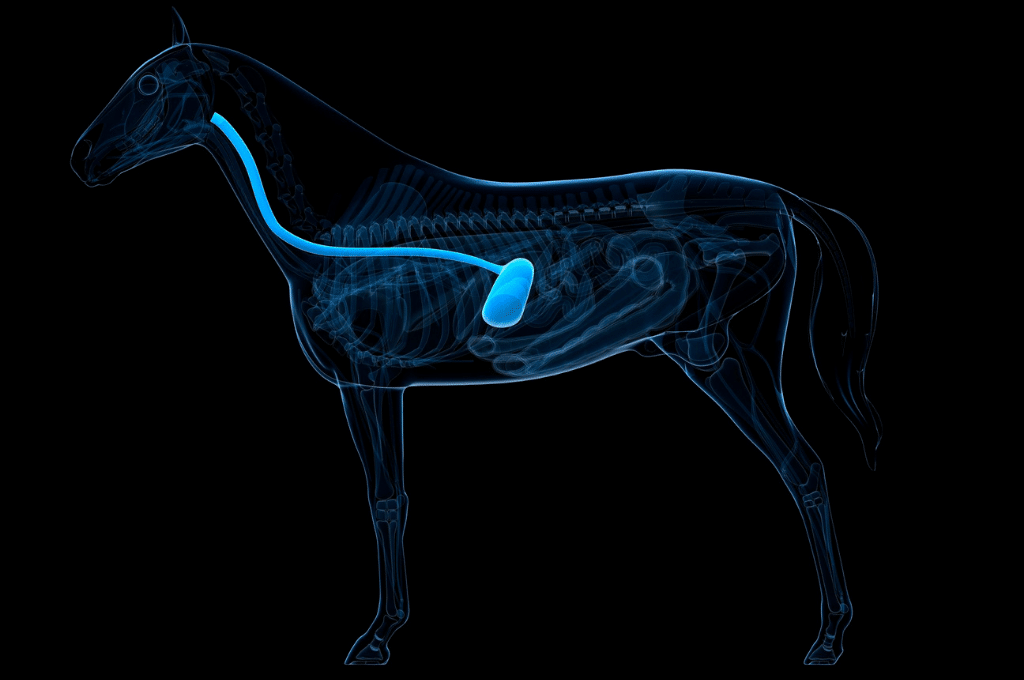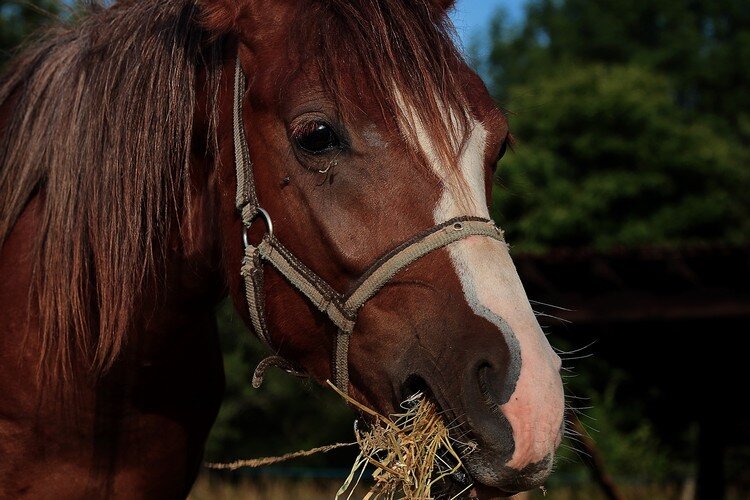HORSE NUTRITION: 10 RULES TO FOLLOW TO MAKE THEM FEEL GOOD
Owner, are you looking for the best range of hay or pellets to keep your horses feeling good? You have the right intention… But not necessarily the right approach to find the right horse feed.
To improve equine well-being, adopt the approach that takes them towards more freedom. Why not just leave them free to choose to eat and drink when they are hungry and thirsty?
By doing this, you fully meet the National Charter for Equine Welfare , and the 5 criteria of the FARM ANIMAL WELFARE COUNCIL .
The question to ask yourself is less ” what ” than ” when and how ” to give it to them.
Here are 10 feeding rules for horses and ponies that should significantly improve the well-being of your boarders.
1 – Animal feed: understanding the digestive system
The best way to feed an animal is to understand how its digestion works. We tend to feed horses by imposing wheat and alfalfa on them at a rate modeled on ours (two to three large daily rations).
However, the equine digestive system cannot follow the same diet as that of a human. The horse has a unique function for a herbivore: a single tiny stomach, a narrow small intestine and a single large intestine to digest all the fibers.

The equine therefore has an almost continuous intestinal transit. He should never eat large portions, but very small amounts several times a day.
2 – Follow their natural needs
The next step is to give the animal more freedom in determining its dietary needs. In other words: to leave the choice of times for feeding to each horse.
How to do ? There is a whole range of solutions to free up your horse’s feeding schedules (and your work schedules, at the same time). They are inspired by the concept of an active stable.
3 – Find the best feed for horses
Of course, in order for your horses and ponies to feel good, the quality is as important as the quantity of the rations:
– fodder of good sanitary quality, free from bacteria, toxic products and mold. Straw or hay, your fodder must have a good nutritional value, adapted to the needs of your horses.
– simple concentrated foods: grains or seeds of plants such as cereals (barley, oats, corn), legumes and / or oilseeds (flax, peanuts, sunflower, etc.). They supplement the forage by increasing the energy and protein value of the daily ration. Perfect for horses with high nutritional needs (growth, intensive work).
4 – Control the dosage for each individual
Each individual has specific nutritional needs.
They vary according to the type of horse: feed for senior horses or young horses, foals or mares, thoroughbreds, stallions, ponies, sport horses or for leisure activities …
Then you have to take into account the horse’s weight, age and state of health (joint problems, osteoarthritis, digestive problems, dental problems, full mare, feeding the horse with gastric ulcer, etc.).
Proteins, fats, carbohydrates, vitamins and minerals, nutrients, food supplements? To establish the correct daily ration (granules, hay and possible food supplement), seek professional advice.
5 – Guarantee free access to the water point
Like the horse’s diet, its water needs are constant. A 500 kilogram horse is made up of 350 liters of water. And, because he chews dry matter throughout the day, he needs constant hydration.
So make sure you have water points accessible to everyone and fill them regularly.
6 – The salt stone
Salt is not stored in the horse’s body.
If the horse works during the day, it perspires and evacuates these minerals that it will have to recharge. Having salt stones as they pass through the stable will allow everyone to regulate their own intake of mineral supplements.
7 – Protect the bronchi of horses
The distribution of fodder in the boxes often generates clouds of dust.
Horses have sensitive bronchi. Dust can create respiratory problems very quickly, both through the hay used and through the trampling of too dry soils. Ideally, the boxes should be empty when you start dispensing. The best is still the open and well ventilated rack.
8 – Protect the dominated from the dominants
As long as you offer free feed to your horses, there is a risk of tensions within the herd.
Like seeing a dominant corner a dominated in a corner, or physically deny him access to food.
One solution to avoiding these behaviors is to remove the angles in the food and drink areas.
9 – Make a change of diet little by little
If you decide to change the way your horses are fed (schedules, automatic distribution), they will have to go through a learning phase.
Support them in this change, which can take from a few days to several weeks depending on the individual.
10 – Check the condition of the residents’ teeth

The state of their teeth affects the diet of horses. With teeth in poor condition, an individual will tend to eat less (or poorly).
Check at least once a year with the veterinarian that they can chew, chew and ingest the contents of their feeder (or dispensers) correctly.

